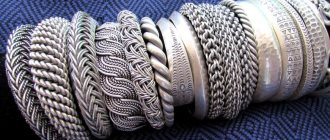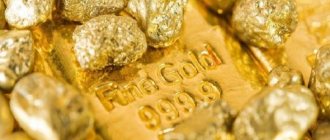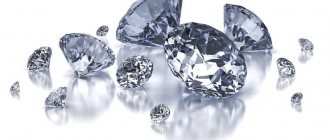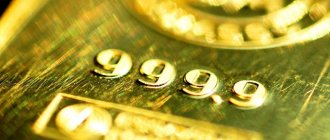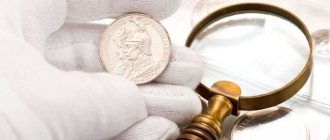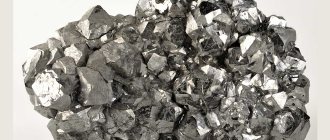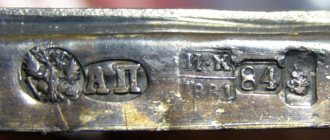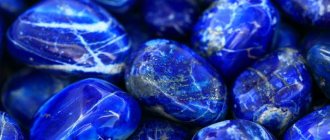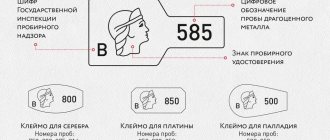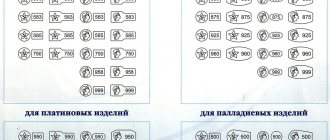Only jewelers know that pure silver is a precious metal that is not only beautiful, but also impractical. The highest standard of silver means not only quality, but softness, difficulty of processing and rapid loss of gloss. If you intensively use openwork jewelry made of pure silver, and even more so if you clean it with abrasive materials, then it will become smooth and lose its relief. This threatens the decoration with loss of expressiveness and artistic value. What are the hallmarks of silver, and what does this mean in terms of the use of the metal in jewelry and other activities?
As a result, master jewelers from all over the world began to use in their work not pure silver, but alloys with alloyed metal. But each master has his own percentage of ligature additions. Some consider it acceptable to add no more than 5%, while others “dilute” the source material by half with additives. Each alloy has its own characteristics, and the choice of jewelers depends on the purpose of the product.
Types of sample
What are the hallmarks of this precious metal? On the finished silver product there is a numerical value indicating the ratio of metal and alloy. Jewelry, dishes and decorative items are made from samples of the following basic values:
- 720— a metal that is susceptible to oxidation and changes over time. Mainly used for making small parts of clothing: buttons, clasps and zippers.
- 800 and 825 are metals suitable for the production of tableware and interior elements. A high percentage of silver content (80 - 83%) is suitable for the active use of objects made from such metal in everyday life. Periodically, an oxidizing film forms on products, which must be removed.
- 875 and 916 are high-quality metals that are actively used for the production of gift sets, wine glasses, glasses, ashtrays and glasses. To add sophistication to silver items of this standard, jewelers often complement their finishing with gilding.
- 925— a classic and proven combination of ligature additives and pure metal. Is this a good test or not? Products of this sample retain their beautiful appearance and are resistant to air and water.
- 960— in appearance and physical properties it is equivalent to pure silver. However, such metal is short-lived, so it is almost never used for making dishes or jewelry.
- 999— pure silver, highest standard. Most often stored in bullion, it is sometimes used to produce fine jewelry or decorative items.
Often silver (for example, 825) is added to 525 gold to increase the durability of the product and reduce its price.
How to measure a sample?
There are two systems used to measure precious metal samples: metric and carat . In Russia, metric measurement of the quality of metals has been adopted since 1927. However, when buying jewelry abroad, you need to first familiarize yourself with the ratio of measurement scales for one and another method:
- 20 carats = 830 standard;
- 21 carats = 875th standard;
- 22 carats = 925th standard;
- 23 carats = 960th standard;
- 24 carats = 999th purity.
Elements of silver markings on jewelry. Testing control. Brand
According to Russian legislation, products containing 80% Ag or more are subject to testing. Due to the softness of application, the only possible option is laser engraving. Having figured out what types of silver there are, you need to understand what the mark looks like in order to distinguish it from a fake. Main marking elements:
- a sign symbolizing a state ID;
- directly a sample that determines the amount of precious metal;
- the code of the inspectorate under whose supervision the assay was carried out contains a letter (each of the 18 such organizations has its own symbol, thanks to which it became possible to recognize the assay district).
Which sample is better?
The best samples are characterized by resistance to external influences and retain their unique shade. But jewelry and utensils made of silver, the share of which is 96 - 99%, have too high ductility and are unsuitable for daily use.
So what is better - which sample? It depends on the purpose of the product. When choosing interior items, dishes or jewelry, you need to pay attention to products of 875 and 925 samples. It is this metal that gives jewelers the opportunity to realize the most unusual ideas. However, if the alloy contains more copper, then its popularity decreases due to the yellowish tint of the products, but the strength will be increased.
Important! The optimal investment is considered to be items made of pure 999 silver, or simply silver bars.
The alloy of silver with cadmium is also highly valued, because such a metal acquires a noble white tint and increased mechanical resistance.
Where is the marking located?
As for where the hallmark is located on jewelry, the options may vary. To search, it is better to arm yourself with a magnifying glass, since the marks are too small to be distinguished by the human eye. They are applied in different ways:
- on rings they can be placed on the outside or inside of the tire;
- on earrings they are usually placed on a hook or a pin;
- on pendants they can be found on hanging rings;
- on bracelets they are on the links that connect the lock and the main part.
Markings are applied so that they do not affect the external part of the accessory. They can be embossed or sparkled. The former, due to the complexity of execution, cannot always be applied to particularly thin and elegant accessories.
Varieties of silver
What to give preference to : light or dark metal?
Buyers are accustomed to seeing white silver on store shelves and do not think that there are several varieties of the precious metal. Silver differs in color and composition:
- Blackened - the production of such metal is preceded by a complex technological process. Blackened objects are popular among connoisseurs of exclusivity and lovers of amulets (such metal is believed to have mystical properties).
- Sterling is 925 silver with a beautiful shine and exquisite white color. This type of metal received its name thanks to the English coins that were minted from it.
- Matte - the popularity of silver jewelry is growing, but buyers want something new and unusual. That's why jewelers invented matte silver - by treating the surface of the product with special corrosive substances or a sandblasting machine. Jewelry is first made and then processed at the final stage, giving the pieces a unique look.
- Filigree - filigree manufacturing technology involves soldering many thin silver wires together. The high cost of filigree products is due to the high demands on the skill of the jeweler and the complexity of their manufacture.
Filigree silver jewelry
Most items and jewelry presented on Russian shelves are made of sterling silver.
Technical metal and imitation
Technical silver is distinguished by its lack of fineness and precious metal content of less than 80%. This metal has its advantages - it is durable and lightweight, has good electrical conductivity and conducts light well. Therefore, technical silver has found its application in electronics and apparatus parts , as well as in industrial production.
have long been known , which formed the basis for the manufacture of silver ionizers for water and the popularity of silver tableware and jewelry. Due to the high cost of the metal, there is always a risk of it being counterfeited by fraudsters. Imitation of silver also occurs in the decoration of monuments and the manufacture of decorative items. Precious metal substitutes are also used in production equipment. Usually, instead of silver, they use:
- Nickel silver - this metal for the production of cutlery is necessarily coated with a small layer of pure silver. But when this layer wears off, a metallic taste will be felt when using nickel silver cookware.
- Cupronickel — the alloy that received this name combines 84 sterling silver, copper, manganese and nickel. Utensils are made from it however, it cannot be called useful.
Cupronickel spoons - Silver leaf - imitates white gold leaf. Intended for finishing furniture, walls and decorative items.
The minimum value of jewelry standard accepted in Russia is 800. Everything else must be designated as costume jewelry.
X825 – Geekworm
X825 V1.2 only for Raspberry pi 4 model b X825 V1.2 only for Raspberry pi 4 model b X825 V1.2 only for Raspberry pi 4 model b Wrong power supply will damage X825 X825 metal case for X825 board 2.5" sata and Pi 4B
Preface
1. Please send the problem information with order numbers and purchase link to our support email: If you need after-sales support, it will be a great help to solve the problem quickly, thanks in advance.
2. What do you need to use Raspberry Pi X825 2.5" SATA Storage Board?
- A Raspberry Pi 4 board, model B
- A X825 Board
- A DC 5V 4A power supply (use high quality power supply)
- 2.5" SATA Hard Drives (HDD) or Solid State Drives (SSD) 【Samsung SSD is not recommended as we have found Samsung EMC SSD to be serious】
- A X735 power management board for intelligent power management and cooling of Raspberry Pi (Additionally, when using an X735 momentary switch board equipped with an X825 chassis, 2 jumpers must be removed on the X735!)
- A X825 Use a metal case (optional, due to Raspberry Pi USB 3.0, 5G AP is recommended if using a case)
For more questions, see the FAQ
Review
The X825 expansion board is a complete storage solution for the latest raspberry pi 4, it supports up to 4TB of 2.5" SATA Hard Drive (HDD) / Solid State Drive (SSD). Only 2.5 inch SATA HDD/SDD interface is suitable for X825 board;
It is upgraded from raspberry pi 3b+/3b X820 V3.0 2.5" SATA SSD expansion board.(Refer to X820 if you want to use 2.5" SATA SSD on raspberry pi 3b+/3b/2b)
Characteristics
for use with
operating system
- All Raspberry Pi operating systems
Main characteristics
- Ideal Storage Solution for Raspberry Pi 4 – 2.5" SATA HDD/SSD Shield
- Supports up to 4TB of 2.5" SATA Hard Drives (HDD)/Solid State Drives (SSD) (Theoretically it can also handle 6TB or 8TB. But we don't actually test the X825 board with 6 or 8 HDD capacity TB, you can try.) 【I do not recommend using Samsung SSD】
- Integrated USB 3.1 Gen1 to SATA 6Gbps Bridge Controller
- USB3.1 Gen1 5Gbps provides plug-and-play functionality on your Raspberry Pi
- Allows you to boot OS from HDD/SSD for faster opening of applications, web serving and copying files (see notes)
- Built-in button to control power on/off (press and hold the button for at least 2s - OFF)
- Onboard Xh3.54 power connector allows you to power other devices
- Red LED indicates power status and blue LED indicates drive status
- External self-contained power supply - does not require power from the Raspberry Pi USB port
- Powers Raspberry Pi - no additional power supply for RPi
- Duplicate HDMI port of Raspberry Pi
- Fully compatible with X735 for intelligent power management and cooling of Raspberry Pi
- Fully compatible with X710 for wide input voltage (6~36V) and intelligent power management
- Fully compatible with X765 for Power over Ethernet (POE, 5V 5A)
- Fully compatible with X725 for uninterruptible power supply (UPS 18650, 5.1V 8A, WOL)
Connection
Specification
- Power supply: 5Vdc +/- 5%, 4A
- Ports and connectors:
- DC Jack - 5.5x2.5mm, USB Jack - USB 3.0 Type A,
- Power output connector - Xh3.54 2-pin
- Power switch connector -Ph3.0 4-pin
Notes
- A microSD card is required to force the Raspbian OS to use the HDD/SSD as the "root" partition.
- For use with original power supply only
- WARNING: Do not connect the Raspberry Pi to the Pi's 40-pin connector and the Type-C connector at the same time.
- USB 3.0 can create radio frequency interference that can cause Wi-Fi and other wireless devices operating in the 2.4 GHz band to have trouble communicating with the Raspberry Pi4. To avoid interference on the 2.4 GHz band when using Wi-Fi, try using the 5 GHz band instead. If the problem still exists, turn off Wi-Fi and use a wired network instead.
Devices
Power Supply Requirements
- Power supply: 100 - 240 VAC, 50/60 Hz input, 5 VDC, 4 A output
- DC plug size: 5.5*2.5mm
- Important Note: Use high quality DC 5V 4A power supply, the best choice is to buy DC 5V 4A power supply provided by Geekworm. If you are using a low quality power supply, it will likely damage your 2.5" HDD/SSD.
How to connect
Installation Guide
Installation video
Installation Guide Guide
Packing list
- X825 board x 1
- USB3.1 jumper x 1
- Power daughter board x 1
- 2-pin power wire x 1
- Spacer F/F M3 x 15 mm x 4
- Spacer F/F M2.5 x 12 mm x 4
- Spacer M/F M2.5 x 11 mm x 1
- Screw M2.5 x 5mm x 8
- Screw M3 x 6 mm x 6
Note: Raspberry pi and 2.5" SATA HDD/SSD are not included in the packing list.
Document
Some tips
FAQ
Q1: HDD/SDD not detected?
- This is a complex question, but we can check it on these points. Please refer to How to check X825
Power supply is very important for X825, some low quality power supplies may damage your board or not recognize HDD/SDD, so it is highly recommended to use this CE/UL/FCC/GS certificate DC 5V 4A power supply.
Q2: Do I need external power supply for x825 board?
- Yes, here's the spec: 5V and 4A with a 5.5mm barrel jack, and don't connect the Raspberry Pi via the 40-pin Pi connector and the Type-C connector at the same time.
Q3: Does X825 support USB boot?
Q4: Why can't X825 recognize the hard disk when transferring large data?
- This situation is not related to the hardware, try checking and updating the firmware. We have a test continuous copy of data exceeding 15 GB on Windows.
Q5: What is the pinout of the PWR switch?
Q6: What is the polarity of X825 DC 5V port?
- For DC port: inside +5V, outside - GND.
Q7: Why does Raspberry Pi freeze when connecting X825?
- Please try formatting the drive and try again.
Q8: Do X Series NAS screens support UASP?
A: 2.5", 3.5" screen NAS (such as X825 X829 X829 X835 X832) uses JMS583 IC, and all of them support UASP ( NOTE: Does not support UASP in earlier versions, released before July 1, 2021.
) to prevent the HDD/SDD from hibernating,
, but M.2 MSATA SSD (X862) only supports TRIM, not UASP;
Suitable metal case for X825
X825-C6 see Housing X825-C2
X825-C7 see X825-C7
Sort by date Sort by score.
Rules for choosing silver products
Please note that when buying dishes or jewelry at local markets in foreign countries, you can get cupronickel or technical silver instead of the promised silver. It is almost impossible to distinguish them externally, but even short-term use will reveal all the shortcomings of counterfeit silver.
It is safest to buy jewelry and tableware in trusted jewelry stores or directly from the manufacturer through an online store .
Important! The best standard for high-quality and truly valuable jewelry is considered to be 875 or 925. Silver with this level of ligature has a beautiful white tint and high strength. It is for products made from such silver that quality certificates are issued, and such jewelry items are sold in good specialized stores.
Not sure which sample to choose? Choose based on the purpose of the product. For example, household silver with 87.5% pure metal in its composition is suitable for tableware, and for jewelry it is better to pay attention to silver with 925 purity.
Is it possible to determine the quality of silver yourself?
How to choose and buy the highest quality silver so as not to be deceived?
You can definitely find out the quality of the product by contacting a jeweler who will carry out an assessment. If the product is of poor quality, you can return it to the store within 14 days after purchase. You can also use express tests that are quite suitable for doing at home:
- Testing with a magnet - a high-quality silver product will not be attracted to a magnet, however, some alloy metals do not react to magnetic influence.
- Silver heats up well in the hand and cools quickly in a cold environment, for example, in the cold.
- Pure metal will darken from sulfur ointment or iodine. To test the quality of the alloy, it is enough to leave a tiny spot on the product and check whether a trace remains. But if the silver is real, then it will not be easy to wipe it off.
- You can check the authenticity of jewelry or dishes using chalk — real silver will darken upon contact with the rock.
925 sterling silver ring
What is a tensile test? (with drawings)
A tensile test, also known as a tensile test, tests the strength of a material. This is a mechanical test in which a pulling force is applied to a material on both sides until the specimen changes shape or breaks. This is a general and important test that provides a variety of information about the material being tested, including elongation, yield strength, tensile strength, and tensile strength of the material. These tests are usually carried out on substances such as metals, plastics, wood and ceramics.
Tensile testing uses pulling forces, usually applied by a specially calibrated machine to test the strength of a material.
The tensile strength of a material sample describes how it reacts when stress is applied to it. By measuring the changes, engineers can determine many things about the material that help determine whether it is suitable for the application they have in mind. In addition to changing the shape of the material, a tensile test will also show the material's "ultimate strength", the maximum tensile load the material can withstand. It also reveals the "yield strength" of the material, which is the amount of stress that causes the specimen to fail or fail.
The changes a material undergoes during a tensile test are used to calculate its strength.
Test systems use a number of different units of measurement. The International System of Units, or SI, recommends using Pascals (Pa) or Newtons per square meter (N/m2) to describe tensile strength. In the United States, many engineers measure tensile strength in kilograms per square inch (KSI).
Tensile testing machines have been used commercially since the late 1800s. The first ones worked manually, but modern versions used commercially may involve computers and highly sensitive electrical components. These more advanced machines allow scientists and engineers to take extremely precise measurements.
In addition to specialized machines that test only tensile strength, there is general purpose equipment called universal testing machines (UTM). These UTMs can perform a variety of stress tests, including bending and compression tests, on a single material sample.
Tensile testing is vital in a number of industries, including mechanical engineering, structural engineering and architecture. For example, during the planning phase of a construction project, these professionals typically calculate the loads that a building may be subject to. To ensure a stable structure, it is necessary to select appropriate building materials that can withstand these loads without failure.
.
